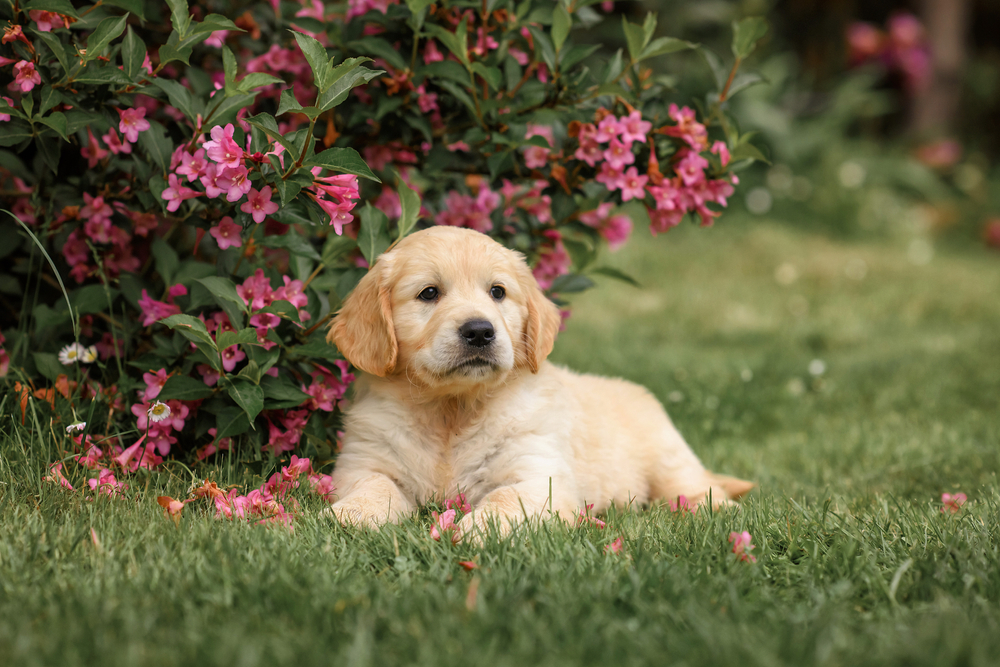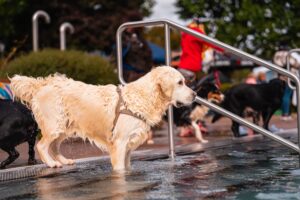Golden Retrievers are one of the most beloved dog breeds, known for their friendly, intelligent, and eager-to-please nature. While these qualities make them wonderful companions, they also mean they thrive with proper training and socialization. A well-mannered and obedient Golden Retriever puppy isn’t just a joy to have around—it’s also a reflection of a dedicated owner.
This guide will walk you through the essential steps for training your Golden Retriever puppy to be a polite, well-behaved member of your family.
Why Training Your Golden Retriever Puppy is Crucial
Training isn’t just about teaching commands—it’s about building a strong bond with your puppy while ensuring their safety and happiness. Golden Retrievers are naturally energetic and curious, so proper training helps channel their energy positively. Here’s why early training is vital:
Prevents Behavioral Issues: Early training can curb undesirable habits like jumping, chewing, and excessive barking.
Fosters Obedience: Puppies trained from a young age are more likely to follow commands and behave appropriately in various situations.
Promotes Socialization: Training often involves exposing your puppy to new people, pets, and environments, which helps them grow into confident, well-adjusted dogs.
Step 1: Start Training Early
Golden Retriever puppies are like little sponges—they absorb everything they experience. The ideal time to begin training is as soon as you bring your puppy home, typically around 8 weeks of age.
Short Sessions: Puppies have short attention spans. Aim for 5–10-minute training sessions, 2–3 times a day.
Positive Reinforcement: Reward good behavior with treats, praise, and affection. Golden Retrievers respond especially well to positive reinforcement.
Consistency: Use the same commands and cues every time to avoid confusion.
Step 2: Teach Basic Commands
Basic obedience commands are the foundation of a well-trained Golden Retriever. Focus on teaching the following commands:
1. Sit
How to Train: Hold a treat close to your puppy’s nose and move it upwards, causing them to lower their bottom. Say “sit” as soon as they do and reward them.
Why It’s Important: “Sit” is a versatile command that helps calm your puppy in various situations.
2. Stay
How to Train: Have your puppy sit, then hold your hand up like a stop sign and say “stay.” Take a step back, wait a few seconds, then reward them for staying. Gradually increase the duration and distance.
Why It’s Important: “Stay” prevents your puppy from wandering into unsafe areas or getting into trouble.
3. Come
How to Train: Start in a distraction-free area. Say “come” while gently tugging on a leash or showing them a treat. Reward them enthusiastically when they approach.
Why It’s Important: A reliable recall is essential for safety, especially during off-leash activities.
4. Leave It
How to Train: Show your puppy a treat in your hand. When they try to grab it, close your hand and say “leave it.” Wait until they stop trying, then reward them with a different treat.
Why It’s Important: “Leave it” helps prevent your puppy from picking up harmful items or engaging in undesirable behavior.
Step 3: Focus on Socialization
Golden Retrievers are naturally friendly, but early socialization ensures they grow into confident, well-rounded dogs.
Expose Your Puppy to New Experiences
Introduce your puppy to a variety of people, animals, sounds, and environments. Positive exposure between 8–16 weeks of age is crucial for their development.
People: Encourage your puppy to meet people of all ages, genders, and appearances.
Animals: Arrange safe playdates with other dogs and introduce them to cats or other household pets.
Environments: Take your puppy to parks, busy streets, and pet-friendly stores to help them adapt to different settings.
Reward Positive Interactions
Whenever your puppy remains calm and friendly during new experiences, reward them with treats and praise. This reinforces that new situations are safe and enjoyable.
Step 4: Address Common Golden Retriever Behaviors
Golden Retrievers are loving, but they can have specific behaviors that require attention:
Chewing
Puppies explore the world with their mouths, so chewing is natural.
Provide appropriate chew toys to satisfy their need to chew.
Redirect them to toys if they start chewing furniture or other items.
Use a deterrent spray if needed for off-limits objects.
Jumping
Golden Retrievers may jump on people out of excitement.
Teach “off” by ignoring them until all four paws are on the ground, then reward calm behavior.
Encourage guests to avoid reinforcing jumping by turning away from the puppy.
Barking
While not typically excessive barkers, Golden Retrievers may bark for attention.
Ignore attention-seeking barks and reward quiet behavior.
Teach the “quiet” command by saying it when your puppy stops barking and rewarding them.
Step 5: Use Crate Training
Crate training is an effective method for housebreaking your Golden Retriever puppy and providing them with a safe space.
Choose the Right Size: The crate should be large enough for your puppy to stand, turn around, and lie down comfortably.
Create Positive Associations: Make the crate inviting with soft bedding and toys. Reward your puppy for entering the crate voluntarily.
Establish a Routine: Use the crate for naps and bedtime, but avoid leaving your puppy crated for long periods.
Step 6: Gradually Introduce Leash Training
Golden Retrievers are energetic and need regular walks, so leash training is essential.
Start Indoors: Begin leash training in a quiet, familiar environment to minimize distractions.
Teach Loose-Leash Walking: Encourage your puppy to walk beside you without pulling by rewarding them for staying close. Stop walking if they pull and resume when they return to your side.
Practice Often: Take short, frequent walks to reinforce good leash behavior.
Step 7: Enroll in Puppy Classes
Professional puppy classes offer structured training and valuable socialization opportunities.
Obedience Training: Classes focus on teaching commands and addressing common puppy behaviors.
Socialization: Puppies interact with other dogs in a controlled setting, improving their social skills.
Expert Guidance: Trainers can provide personalized advice for your puppy’s specific needs.
Step 8: Stay Patient and Consistent
Training a Golden Retriever puppy takes time and effort. Patience and consistency are key to success.
Set Realistic Goals: Progress may be gradual, but small achievements add up.
Celebrate Success: Reward your puppy for good behavior to keep them motivated.
Be Persistent: Stick to the training routine, even when progress seems slow.







